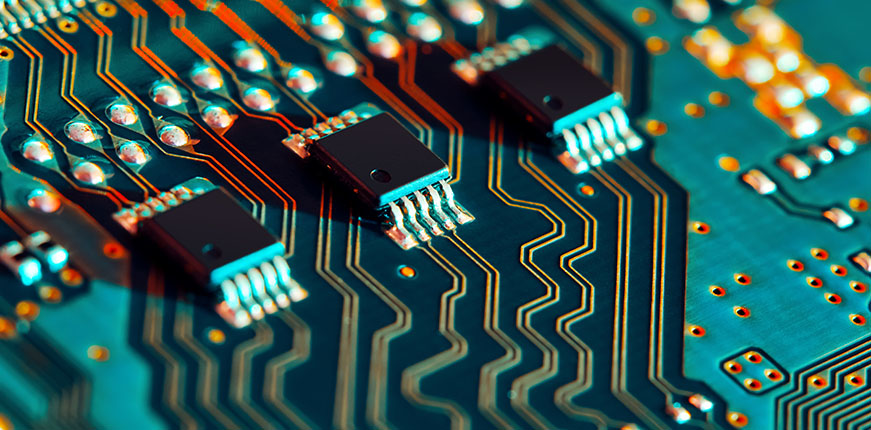Heavy Copper PCBs have long been recognized for their exceptional ability to handle high-current applications and provide superior thermal management. But what about their performance in mixed-signal and analog circuits? This article will explore how Heavy Copper PCBs can be leveraged in these specialized applications, examining the key factors that make them suitable for high-current and sensitive signal processing tasks. By diving into the technical aspects and design benefits, we will demonstrate how Heavy Copper PCBs can support mixed-signal and analog circuits in various industries, from automotive to industrial control systems.
Importance of Heavy Copper PCBs for Mixed-Signal Circuits
A Heavy Copper PCB refers to a printed circuit board with thicker copper traces than standard PCBs. While standard PCBs typically use copper weights of 1 to 2 ounces per square foot, Heavy Copper PCBs use copper weights of 3 ounces and beyond, with some designs using copper weights as high as 10 ounces per square foot or more. This increased copper thickness allows the PCB to handle higher currents and dissipate heat more effectively, making them ideal for power electronics and high-power applications.
In the context of mixed-signal circuits, Heavy Copper PCBs offer several advantages. Mixed-signal circuits combine both analog and digital signals, each with unique requirements. Digital signals are often faster and require precise routing to avoid interference, while analog signals are more sensitive to noise and need to be carefully isolated to maintain signal integrity. The thicker copper in Heavy Copper PCBs can help manage these signals by providing improved current capacity for the power components while maintaining low impedance paths for the analog signals. This balance is crucial in mixed-signal applications, where power and signal integrity must be maintained simultaneously.
Benefits of Thick Copper PCBs for Analog Circuit Performance
Regarding analog circuits, the primary concern is maintaining signal integrity and reducing noise, especially in sensitive applications like audio processing, medical devices, and instrumentation. Heavy Copper PCBs can provide enhanced grounding and shielding to prevent unwanted interference that could degrade the quality of analog signals. The thicker copper also helps reduce parasitic inductance and resistance, which are crucial factors for maintaining accurate analog signal transmission.
In addition to providing better signal integrity, Heavy Copper PCBs can improve power delivery to analog circuits, particularly in applications requiring high currents for components such as amplifiers, voltage regulators, and sensors. By incorporating thicker copper traces and vias, the board ensures that the power delivery system remains stable without introducing noise or power fluctuations that could impact the analog circuitry. As a result, Heavy Copper PCBs can deliver consistent and reliable performance for analog circuits, even in demanding environments.
Managing Power and Signal Integrity in Mixed-Signal Circuits
The challenge lies in managing both power and signal integrity in mixed-signal systems. Digital circuits require high-speed signal paths, while analog circuits need noise-free environments for accurate signal transmission. Heavy Copper PCBs can address these challenges by providing robust power delivery and superior thermal management while ensuring the integrity of analog signal paths. The thicker copper in the PCB reduces the chances of voltage drop across long traces, which is critical for maintaining signal quality in both the digital and analog domains.
Moreover, Heavy Copper PCBs allow for effective signal isolation by providing separate ground planes for the analog and digital circuits. By strategically placing power and ground planes on different layers, designers can minimize the coupling of noise from the digital side to the analog side. This layout helps prevent digital switching noise from contaminating the sensitive analog signals, making Heavy Copper PCBs ideal for applications that involve mixed-signal and analog components.
Design Considerations for Mixed-Signal and Analog Circuits
Designing Heavy Copper PCBs for mixed-signal and analog circuits requires careful consideration of several factors. One of the primary concerns is the placement of components. Designers must appropriately space analog and digital components to reduce cross-talk and signal interference. In high-current applications, careful routing of traces and vias is essential to avoid introducing noise or signal distortion.
Another important factor is thermal management. Heavy Copper PCBs offer enhanced heat dissipation due to the increased copper thickness, but designers still need to account for the heat generated by high-power components. Heat sinks, thermal vias, and strategically placed components can help ensure that the circuit’s analog and digital parts remain within operational temperature limits. Proper design also includes optimizing trace width to handle higher currents while maintaining the integrity of the analog signal paths.
Advantages in High-Power Mixed-Signal Applications
Heavy copper PCBs are particularly advantageous for high-power mixed-signal applications, such as electric vehicles (EVs), industrial control systems, and power supplies. These applications often require both high-current handling and precise signal integrity. In these contexts, Heavy Copper PCBs can manage the power needs of high-current components such as power regulators, MOSFETs, and inductors while ensuring that the analog signal paths remain free from noise.
The ability of Heavy Copper PCBs to dissipate heat effectively is critical in high-power applications, where excessive heat can degrade the performance of both power and signal circuits. Heavy Copper PCBs use thicker copper traces to prevent overheating and help maintain consistent performance in demanding mixed-signal environments. These boards can also accommodate complex circuit layouts, allowing designers to incorporate high-power and sensitive analog components on the identical PCB, further streamlining the design process.
Future Trends and Innovations in Mixed-Signal and Analog Circuits
As technology evolves, the demand for high-performance Heavy Copper PCBs grows, especially in mixed-signal and analog circuit applications. Advancements in PCB design tools and materials enable even more efficient power management and signal isolation for these complex systems. Innovations such as embedded components, advanced thermal management techniques, and finer trace widths are pushing the capabilities of Heavy Copper PCBs to new heights.
Heavy Copper PCBs will likely become even more integral to industries like automotive, aerospace, and telecommunications, where high-power and precision analog circuits are critical. The trend toward miniaturization and higher integration will continue to drive the need for PCBs that can handle power and delicate signal processing. With ongoing research and development in PCB manufacturing, the future of Heavy Copper PCBs in mixed-signal and analog applications looks promising.
The Versatility of Heavy Copper PCBs for Mixed-Signal and Analog Circuits
Heavy copper PCBs offer significant advantages for mixed-signal and analog circuits, combining power handling with signal integrity that many other PCBs cannot match. By using thicker copper for increased current capacity, better heat dissipation, and enhanced signal integrity, heavy copper PCBs offer a powerful solution for high-performance applications. Whether you are designing for industrial controls, automotive systems, or telecommunications, these PCBs are an excellent choice for demanding mixed-signal and analog circuit applications.



